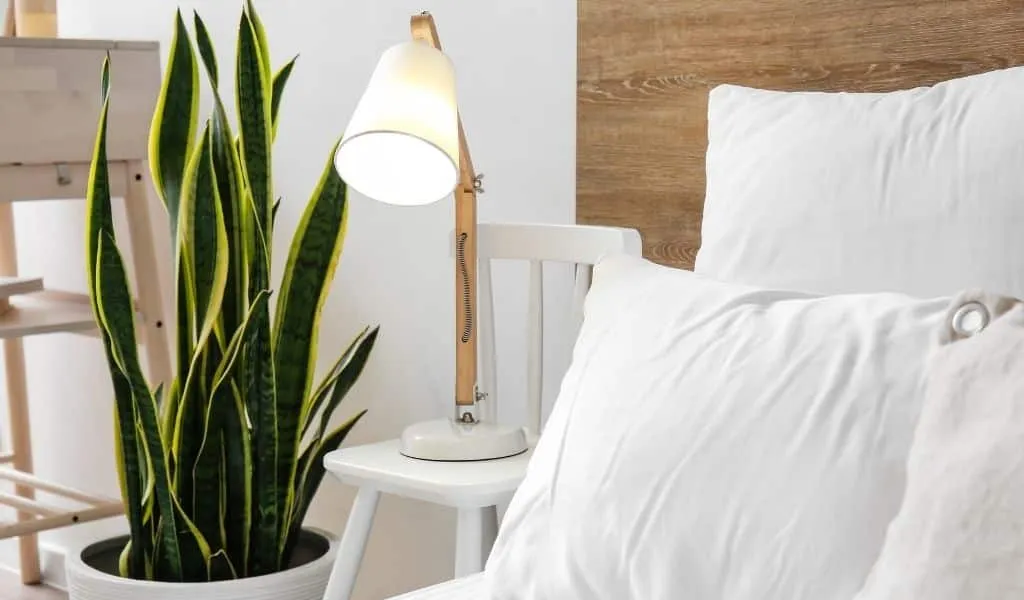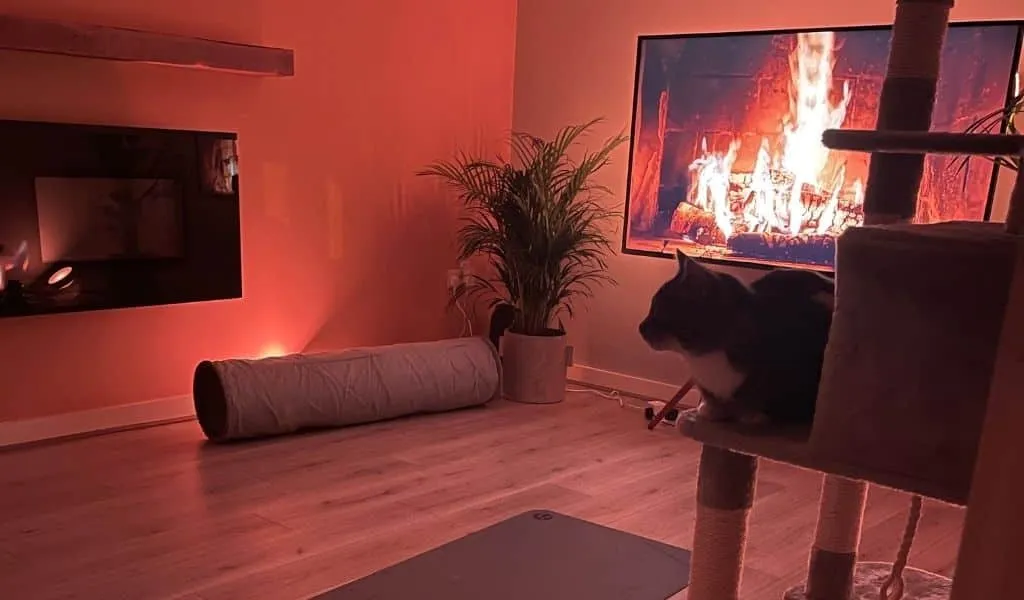13 Best Philips Hue Tips & Tricks [UK Guide]
Philips Hue is an expensive commitment, but recent updates this year have boosted Hue’s ease of use, brightness, automation features and more. If you want to get the most real value from your lights, then you’ll want to use them to do more than just change colour.
1. Turn Your Hue Lights into a Home Security Feature
A proven method of keeping prospective burglars guessing is to randomise activity within the home. It’s been popular with travellers to buy timer sockets that randomise power to lamps, however, these are prone to failure and burglars are wise to their use and regularity.
Your Hue lights however can act as one of the most effective deterrents possible by adding a convincingly lived-in element to any routine you’re running. Lights can randomly dim or change colour or turn on and off at random – completely mimicking daily behaviour – all while you’re getting sunburned in Benidorm. Check out ‘Light Schedules with Randomness’ in the Hue Labs section of the official app.
3. Use Third Party Bulbs With Your Hue Bridge
Just because you’ve bought into the Hue ecosystem, it doesn’t mean all your lights need to be Philips Hue. Many manufacturers now make Zigbee bulbs that are compatible with Philips Hue.
Many of these lights are significantly less expensive, and although not all features may be supported as with official Hue bulbs, you can get a lot for your money. See a full list of bulbs that work with Hue here.
2. Swap Your Alarm Clock for a Hue Wake Up Routine

A more natural way to wake up than an alarm clock is to use light. With Philips Hue, you can use their preset Hue Wake and Sleep routines to fade the lights on over a period of an hour.
However, these aren’t perfect as there is no way to set a brightness limit or change how long the routine lasts. Instead, a helpful hue tip is to create a custom wake up routine that fades the lights to a comfortable level on your terms.
To set up a custom wake up routine for your Hue lights:
- Open the Philips Hue app and tap ‘Automations’
- On the top right of the app, click the ’+’ logo.
- Scroll to the end of the automation creation page and click on ‘Custom’.
- Choose a start/end time and select which days you want the automation to run.
- On the next screen, decide which lights you want the automation to run on.
- Your final choice is to pick the light colour and brightness. ‘Relax’ is a nice choice for early morning starts.
- Click ‘Done’ then ‘Next’ to name your automation.
4. Add a Switch for the Traditional Option
Using your voice to control lights is one thing, but sometimes you just can’t break the habit of hitting a switch when you enter or leave a room. Unfortunately, turning the switch off will stop your Hue bulbs from working, and if you try to use an incompatible dimmer switch it can result in your hue bulbs flashing.
Luckily, there are two great Hue smart switches you can choose from, the dimmer switch and the smart button. Both are battery-powered and can be mounted anywhere in your home without wiring, I recommend over your existing light switches.
You can then pair the switch with your lights so that both voice control and a physical button work nicely. Your guests will certainly find it easier to adapt to.
5. Hue Motion Sensors are Security, Practicality and Entertainment all in one.
The sensor has a wide field of motion and sensitivity can be adjusted to low, medium, and high. Mounting choice and sensitivity level choice means you can avoid pets triggering lights unnecessarily.
Philips has done a lot of thinking behind automating lighting and some of the features are very clever at saving you setup time. The best example of this is Daylight Sensitivity where the sensor detects ambient light levels throughout the day and changes the brightness of light that comes on when motion is detected.
Another advantage is the newer Hue Outdoor Motion sensor which can be used outdoors and runs on a battery just like its indoor sibling, making it simple to set up. This is excellent for late-night deliveries and guests and adds an element of security to your outdoor smart lights.
Or if you’re a little more resourceful, you have creepy Halloween or cosy Christmas lighting turn on in your hallway anytime someone approaches!
6. Use ‘Power On Behaviour’ to Choose How Your Lights Respond to Power Cuts
Power-on behaviour is a unique feature that decides what your lights will do when they are first powered on.
I like to set mine to ‘power loss recovery’ which returns them to their previous state. This is useful if there’s a power cut so that your bulbs don’t turn on to full brightness when power resumes as it could be the middle of the night.
Alternatively, you can choose a specific colour and intensity for each bulb. This only works with official Philips Hue bulbs connected to a bridge and not third party ‘friends of hue’ bulbs.
See my full guide to setting up Hue power on behaviour to find out more and to learn how to get started.
7. Link the Hue App to Spotify and Watch Your Lights Dance
Previously, you’d need a third party app to sync Hue lights with music, but a recent update means there is now a native integration between Hue and Spotify.
If you’re like me, you probably thought the Hue colour bulbs were a great idea for weekend mood lighting, working out at home and entertaining guests - and while the range of colours is truly incredible, it’s just missing something special when the lights are static.
The algorithm Hue has developed here is brilliant.
How to connect Hue with Spotify:
- Make sure you’re running the latest version of the Hue App.
- Click on the ‘Sync’ tab in the Hue App.
- Follow onscreen prompts to set up or link an existing Spotify account.
- Follow prompts to create an ‘Entertainment Area’ or use an existing one.
- Play a song, podcast, or playlist in the Spotify app.
- Press the sync icon in the ‘Sync’ tab on the Hue App and watch the lights dance.
8. Create a Futuristic Home Theatre and Workout Studio With the Hue Sync Box

If you love the effect and the simplicity of the Spotify sync above, you can also do this for visuals too. Philips have released the Hue Sync Box and we can now sync movies and gaming, or any video source that uses an HDMI input for a more immersive experience by splashing light across the wall to match the content on the screen.
It’s quite pricey, but for the money, you get a futuristic home theatre, a next-gen gaming room, and a supercharged Zwift studio all in one. Once you have set up the sync box, it has 4 HDMI inputs for connecting all of your devices.
9. Control Hue Lights With Siri
Apple Homekit may be a little less user friendly to set up than Amazon’s Alexa or Google’s Assistant, but the difference in set up time is negligible in practice.
How to:
- Go to your Hue app and navigate to ‘Settings’ then ‘HomeKit & Siri’.
- Tap Pair Hue Bridge.
- Name your home and tap ‘Create Home’.
- The app will open your camera, now you can scan the ID under your Hue Bridge.
Done! All your lights will now appear in the Apple Homekit app, ready for use with Siri. Spend a little time in the Homekit app to arrange the lights in various rooms as you have them in your home.
10. Integrate Alexa with Philips Hue for Voice Commands and Routines
It’s hard to beat shouting at Alexa to turn up the lights and Hue and Amazon have done an amazing job of integrating their products and services. Within a couple of minutes all your Hue settings can be ported over to Alexa for voice control.
How to:
- Open the Alexa app.
- Tap the menu icon, and then tap ‘Skills’.
- Type ‘Philips Hue’ in the search bar and find the Philips Hue skill.
- Tap ‘Enable’.
- Sign-in to your Philips Hue Account page
- Tap ‘Discover Devices’ in the pop-up. Alexa will now scan and integrate with all your Hue devices over the next few minutes.
- When Alexa is done, hit the back arrow to be returned to the main menu.
You’re now ready to control Hue with Alexa voice commands.
11. Add Your Philips Hue Lights to Google Home
Similarly to the previous tip, Hue and Google have also done an amazing job of integration. Setup is clean and simple without needing to set up lights and rooms over again.
How to:
- Open the Google Home app.
- Tap the ‘+’ icon.
- Tap ‘Set up device’ and then ‘Works with Google’.
- Type ‘Philips Hue’ in the search bar and choose the Philips Hue skill.
- Sign-in to your Philips Hue Account page
- Tap ‘Yes’ to grant the Google Home app permission. Google Assistant will now scan and integrate all your Hue devices.
- When Google Assistant is done, hit the back arrow to be returned to the main menu.
You’re now ready to control Hue with an ‘OK, Google’ and add your Hue lights to Google Home routines.
12. Upgrade Your Bulbs and Double the Brightness
Many of us bought our Hue lights gradually over previous years and although they’re the best smart lighting ecosystem in the eyes of many, one complaint is that the bulbs aren’t bright enough at max for some uses.
Many of Hue’s bulbs, like the flagship ‘white and colour ambience’ range are only 806 lumens. The new bulbs released in October 2021 have two versions, 1,100 lumens and 1,600 lumens, with the latter being a little more expensive.
That’s a major upgrade, from around 40% to 100% more brightness. It should be especially noticeable in some of the deeper colours and will be well worth the outlay for many users.
13. Set up IFTTT to do Almost Anything You Imagine
My final Philips hue tip is to use a very simple and clever automation application called IFTTT (If This Then That).
In theory, your smart devices and world of smart device applications should all be able to interact with each other in any way you dream up, so for example if you wanted your Hue lights to flash like a strobe every time your robot vacuum begins cleaning - you should be able to do it.
IFTTT is a very simple automation protocol that lets you do just this. Searching for ‘Hue’ on IFTTT.com will bring up a list of popular automation recipes ready to go, like Hue lights flashing when it rains, or Hue lights coming on when someone presses your smart doorbell.